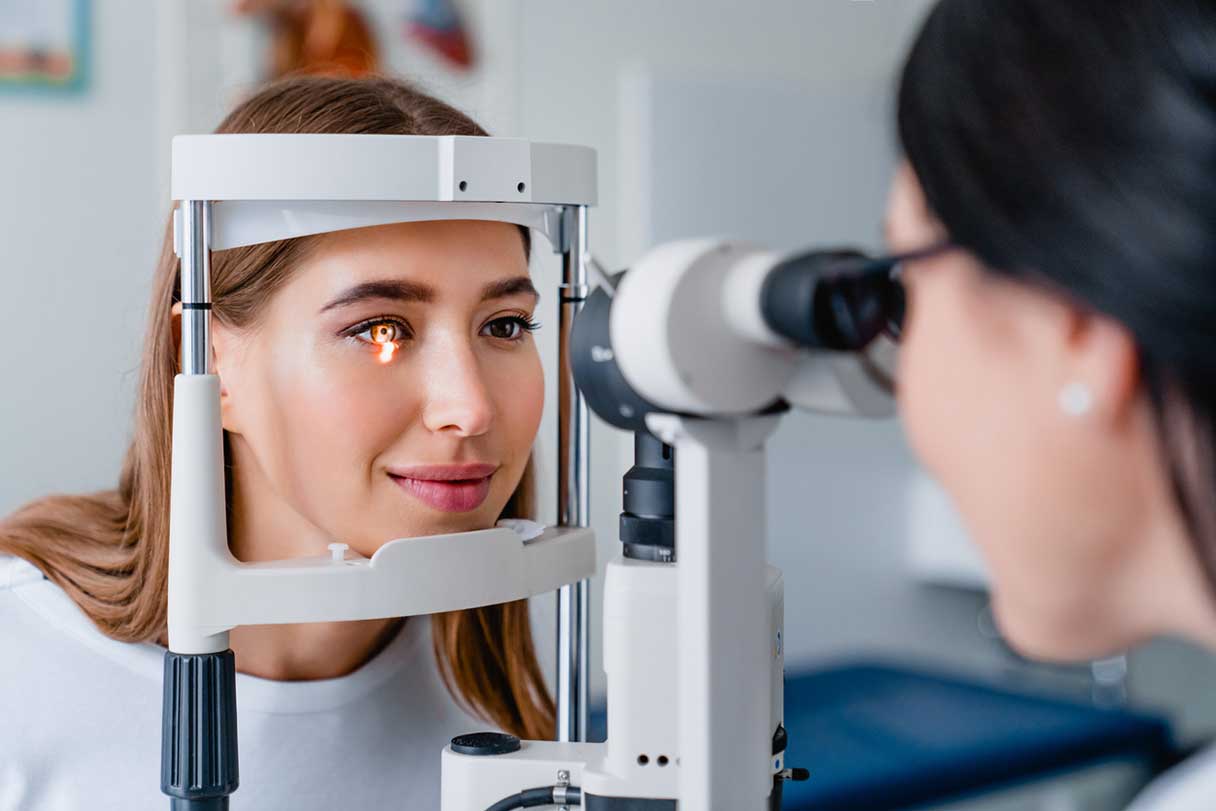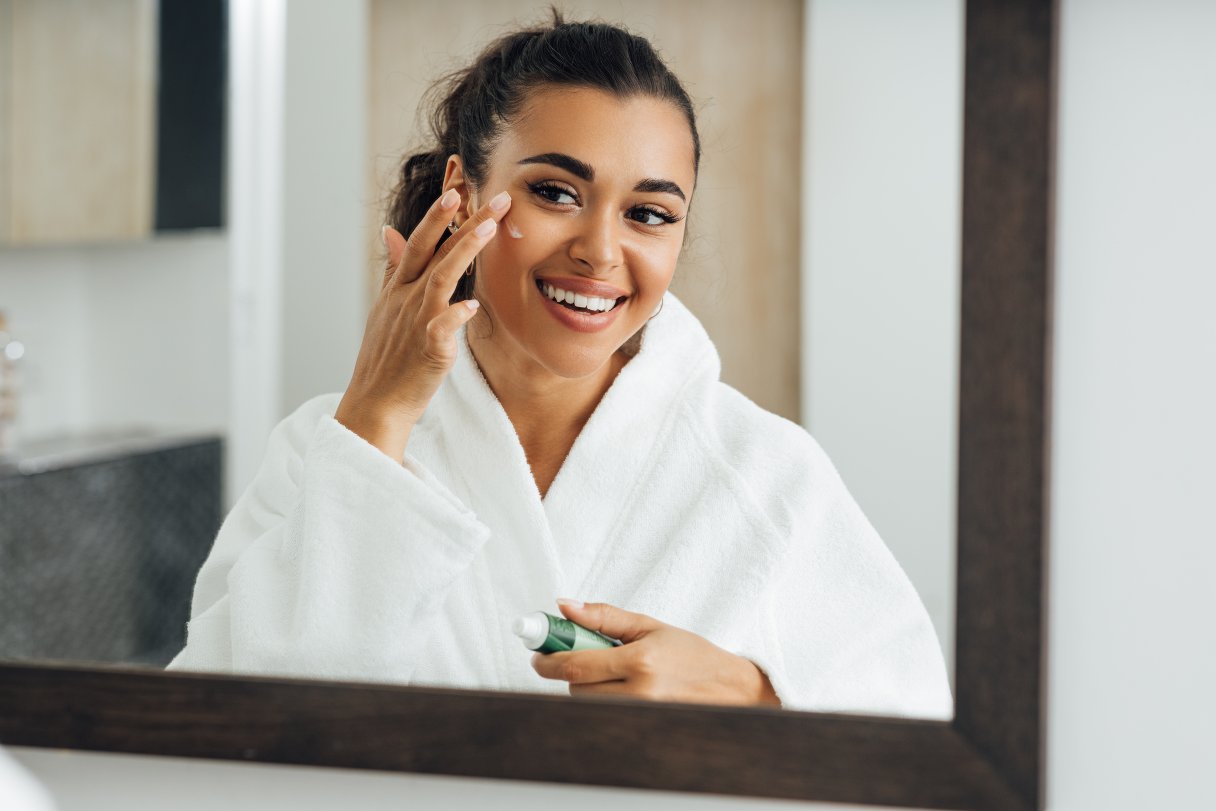Teeth straightening has come a long way over the years. And while metal braces are still the go-to for those with significant teeth alignment problems, clear aligners have emerged as the straightener of choice for teens and adults with mild teeth correction needs.
These “invisible braces" use a series of plastic appliances to guide teeth into healthy positions without brackets or wires (though some patients do need attachments and possibly rubber bands — but more on that below). You remove the aligners when you eat, so it's a much less invasive orthodontic treatment than traditional braces.1
While Invisalign® was the first brand of clear aligners to hit the market, today there are several clear aligners to choose from, including ClearCorrect, Reveal Clear Aligners and others. And while they have become popular, that doesn't mean they are a perfect fit for everyone. Here are a few things to consider when weighing the pros and cons of this innovative dental technology.
Benefits of Clear Aligners
There's no doubt that clear aligners eliminate some of the inconveniences of having your teeth straightened. Here are the top 5 reasons why people choose this alternative to braces:
1. Clear aligners are available from your dentist
Although orthodontists traditionally fit braces, clear aligners are also prescribed and fitted by a growing number of general dentists. More complicated cases may need input from an orthodontist, but your dentist can be a good place to start.1
2. Clear aligners are removable
Aligners should be worn 22 hours a day or as prescribed by your dentist.2 That means you can take them out of your mouth before eating (which keeps sticky and crunchy foods on the menu) and playing a contact sport, when attending social events or while posing for important photos.
3. Clear aligners are transparent
The aligners are made of clear plastic or acrylic that's molded into the shape of your teeth. Commonly called “trays," they're hard to detect, so you feel less self-conscious about wearing braces as an adult.1
4. Clear aligners support better dental hygiene
Because the aligner trays are removable, you can take them out to floss and brush your teeth, making it easier to keep your teeth and gums clean and healthy than with traditional braces.
5. Clear aligners cost the same (or less than) traditional braces
While the actual cost varies based on individual needs, the Consumer Guide to Dentistry reports that the average cost in the United States of clear aligners such as Invisalign is $3,000 to $5,000.2 Standard metal braces tend to run from $3,000 to $7,500.3
Disadvantages of Clear Aligners
With all that convenience, clear aligners do have some drawbacks. Treatment with clear aligners can take longer and require more discipline, since you can remove them whenever you want and may forget to put them back in.
Regardless of which teeth straightening solution you choose — metal braces or clear aligners — you can expect to wear a retainer to prevent teeth from shifting following treatment.1
Types of Clear Aligners
Align Technology, the company that makes Invisalign, was the first of its kind and is still the most recognized, but there are other options now on the clear aligner scene, such as Reveal Clear Aligners and ClearCorrect. Each has its own selling point, whether it's a slightly thinner material or a design that focuses on straightening front teeth, so visit their websites for more information. Your dentist may offer a few different brands and can help you choose which one would be best for your situation.
A 5-Step Process to Get Clear Aligners
If you're ready to take the next step and get clear aligners, here's how to start your journey toward straighter teeth.
1. Find a provider and schedule your initial consultation
One of the benefits of getting clear aligners is that many dentists offer this service, so you don't have to go to an orthodontist for treatment. If you just need a few teeth straightened, a dentist can easily help you with the process.
If you have something more complex, such as an overbite or underbite that needs to be corrected or several teeth that need significant movement, consider getting a second opinion from an orthodontist. That's not to say you won't be a candidate for clear aligners, but an orthodontist can help make sure you're getting the best adjustments and treatment possible.
During the consultation, the dentist or orthodontist will evaluate your teeth (which may include X-rays) and discuss your goals to determine a treatment plan.4 You'll get an estimate of how long treatment might take and the cost of Invisalign or other clear aligner treatment. There are multiple options for clear aligners — your dentist can help you decide what might be best for you.
While every individual is different, the average clear aligner treatment plan is 12 to 18 months.5 For more complex cases, metal braces can work faster than clear aligners.
2. Start the clear aligner treatment process
Once you're ready to get started, your doctor will make impressions of your teeth. Clear aligner molds can be made in the traditional way by having you bite down on trays filled with a clay-like substance, or with a digital scan using X-rays and high-definition photos.6 Once the impressions have been made, your doctor will receive a series of aligners (or trays).
3. Get your first set of clear aligners
It can take a few weeks for the first set of aligners to be ready, but once they are, your doctor will see the entire treatment plan so they know exactly how your teeth should be moving with each set of aligners.
Depending on your plan, you may need attachments, which are tooth-colored shapes attached to your teeth. The aligners hook onto these attachments to add force and more effectively move teeth. If you have a bite issue, you may need small rubber bands as well, but all of these additions are minimal and barely noticeable.7
Many patients change their aligners every one to two weeks, but your doctor will give you a specific time frame when you pick up your first set. The total number of aligners you will have depends on how long your treatment plan is.
You should wear your aligners at all times unless you are eating or brushing your teeth. The general recommendation is 20 to 22 hours per day6 for the best results. Because of this, clear aligners are generally recommended for teens and adults.
4. Follow up with your doctor
Your doctor will have you come in periodically to pick up more aligners, check they fit properly and ensure your teeth are moving the way they should. At certain points during your treatment, you may need to get your attachments removed or replaced, or have new ones added.7
If things aren't going as planned with your teeth, your dentist may take new molds and reevaluate your treatment plan (often at no additional cost, but it depends on your dentist or your needs) or refer you to an orthodontist for a second opinion.
5. Comply with any aftercare treatment
After you finish your treatment, you'll want to keep your new smile in tip-top shape, so your doctor may recommend using a retainer.1 This keeps your teeth from shifting back to their original positions. How long you wear the retainer can range from all day at first to just at night — your doctor will give you more details once your treatment is complete.
Everyone is different and every clear aligner treatment is different, so consult with your dental provider to see if clear aligners are an option for you.
Clear Aligner Tips for Beginners
- Clear aligners are made to be durable and only worn for a few weeks at a time, but they can crack. If that happens, call your dentist or orthodontist immediately.
- Keep your aligners clean by rinsing and brushing them daily. It's easiest to do this when you take them out to brush your teeth.8
- Store your clear aligners in a protective case when they aren't in your mouth. This prevents them from getting lost or dirty.8
- Be sure to change your aligners when you're supposed to per your treatment plan.
- Continue to get regular dental cleanings.
To determine if clear aligners are right for you, schedule an initial exam with your dentist for an evaluation of your teeth alignment and treatment options.
CareCredit Credit Card Financing for Clear Aligners
Whether you're investing in clear aligners or you're simply paying for a dental exam, the CareCredit credit card can help you pay for costs not covered by insurance.* Use our Acceptance Locator to find a dentist or orthodontist near you that accepts CareCredit to help get you on track to your perfect smile. Continue your wellness journey by downloading the CareCredit Mobile App to manage your CareCredit account, find a provider on the go and easily access the Well U blog for more great articles, podcasts and videos.
In addition to orthodontics, you can also use your CareCredit credit card for pet care, cosmetic, vision, hearing, health systems, dermatology, pharmacy purchases, spa treatments and so much more within the CareCredit network. How will you invest in your health and wellness next?
Author Bio
Abbie Mood is a freelance writer with more than 10 years of experience. She has worked with clients of all sizes to create compelling content and she has written for the American Kennel Club, Marriott Bonvoy, Women's Health Online, Headspace and more.









